I know plenty of people who hate work but WANT to find a way to love it.
Luckily, that’s what this post is about:
Finding your true strengths at work AND loving what you do.
I sat down with Patrick Lencioni, author of various best-selling books, to talk all about work styles. Watch our video below:
What is a Work Style?
Your work style is how you prefer to plan your work tasks, communicate professionally with others, and like to get tasks done. Different workers have different work styles—for example, someone who likes to ponder things may spend a lot of time thinking and gathering inspiration for new ideas.
Others with a more action-oriented work style may take those ideas and turn them into a reality. Some workers like to have a collaborative work style—extroverts like to brainstorm around a conference table. Others are more introverted and prefer to brainstorm alone.
Here’s what’s important: You need to know your work style… and others should too! If you’re utilizing your ideal work style, you’ll be able to enter a state of flow, or peak performance, much easier than if you were assigned tasks that require a different work style. You’ll be less likely to count down the minutes until work is over and much more likely to find enjoyment in utilizing your strengths.
So what’s your work style personality? Let’s take a deep dive below.
What Are The 6 Work Styles And Which One Are You?
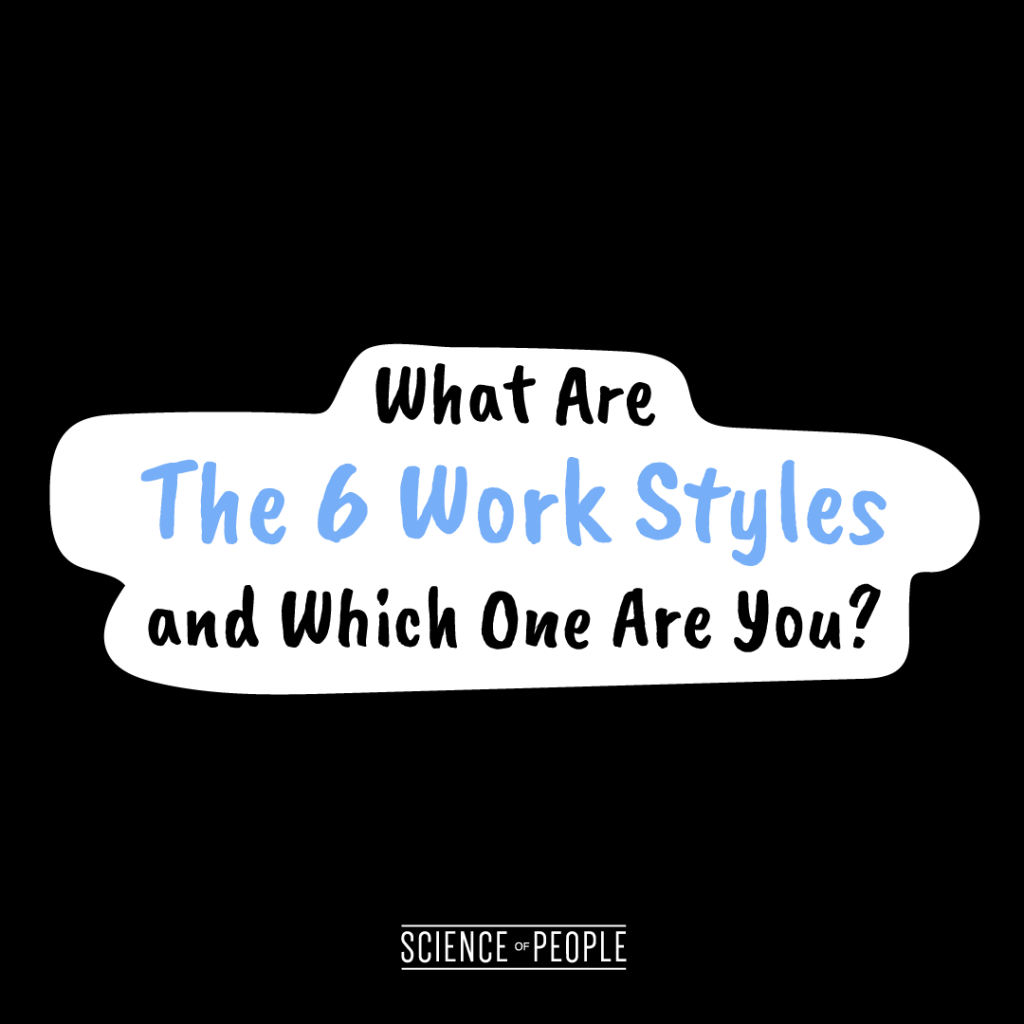
Whether you’re:
- in a team organizing a project
- planning a company retreat
- part of a startup
Patrick Lencioni found there are 6 work styles people can have. You may even find that 2 different styles describe you best.
These work styles are Wonder, Invention, Discernment, Galvanizing, Enablement, and Tenacity (and they conveniently make up the acronym WIDGET!).
Find out which working style suits you best:
#1: Wonder
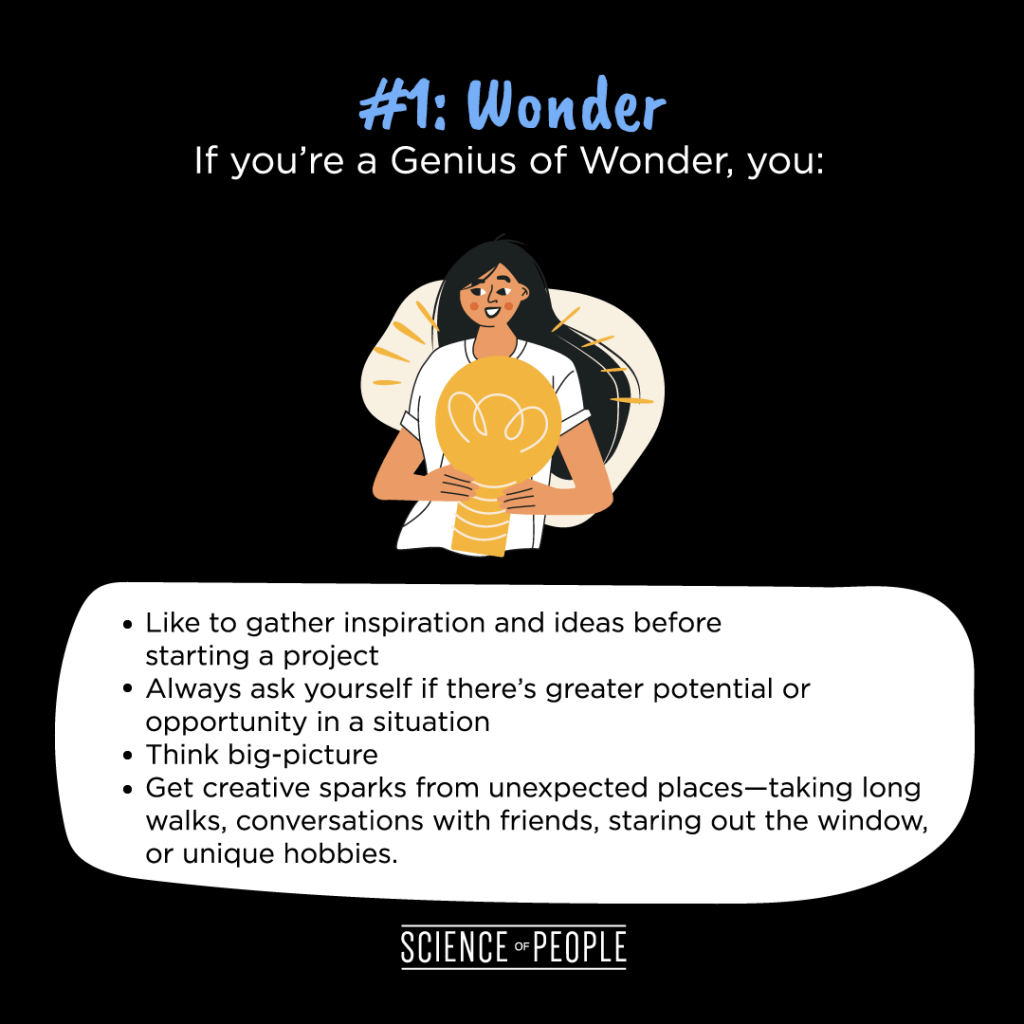
Some people are geniuses at pondering things and asking why. These are the Wonderers or daydreamers.
If you’re a Genius of Wonder, you:
- like to gather inspiration and ideas before starting a project
- always ask yourself if there’s greater potential or opportunity in a situation
- think big-picture
- get creative sparks from unexpected places—taking long walks, having conversations with friends, staring out the window, or practicing unique hobbies
#2: Invention
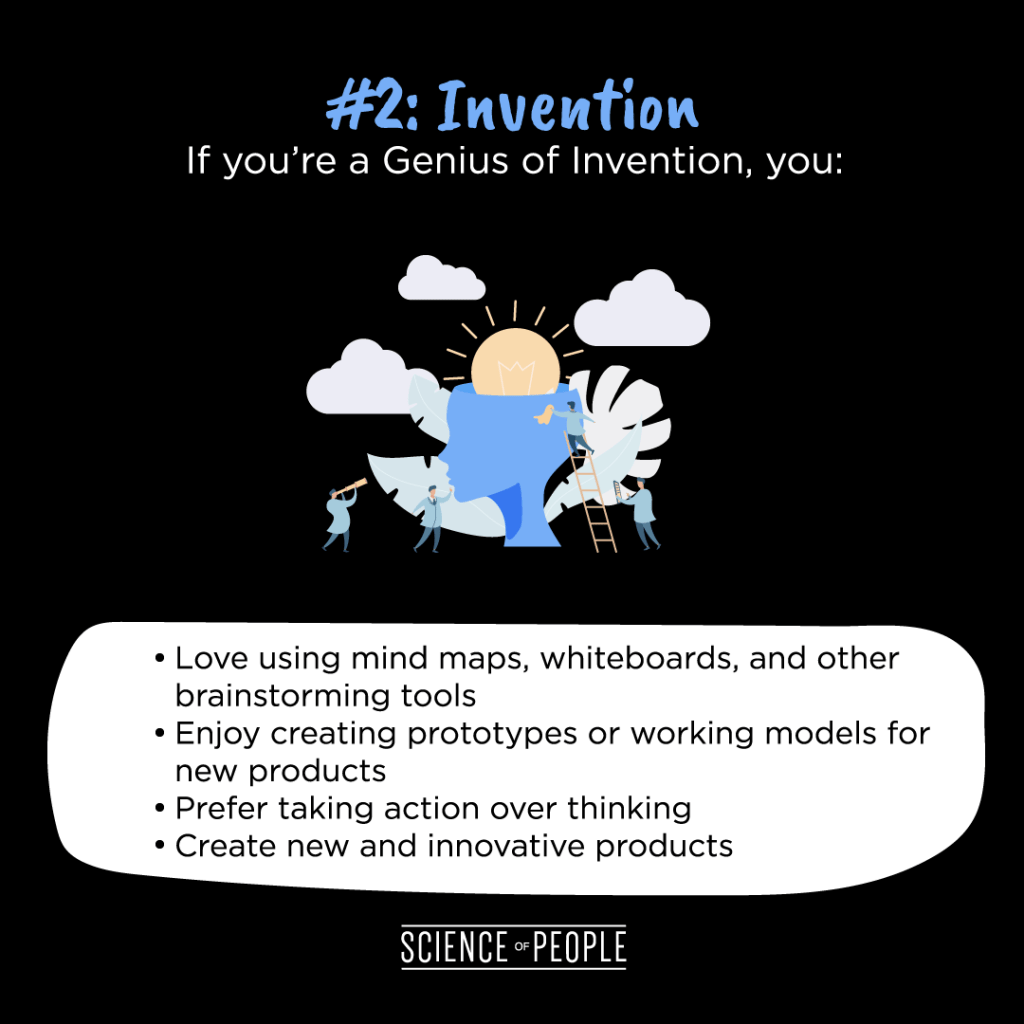
Inventors take what the Wonderers come up with and solve the problem, come up with an idea, or create a product. This includes mental tinkerers as well, who love to brainstorm and put ideas into place.
If you’re a Genius of Invention, you:
- love using mind maps, whiteboards, and other brainstorming tools
- enjoy creating prototypes or working models for new products
- prefer taking action over thinking
- create new and innovative products
#3: Discernment
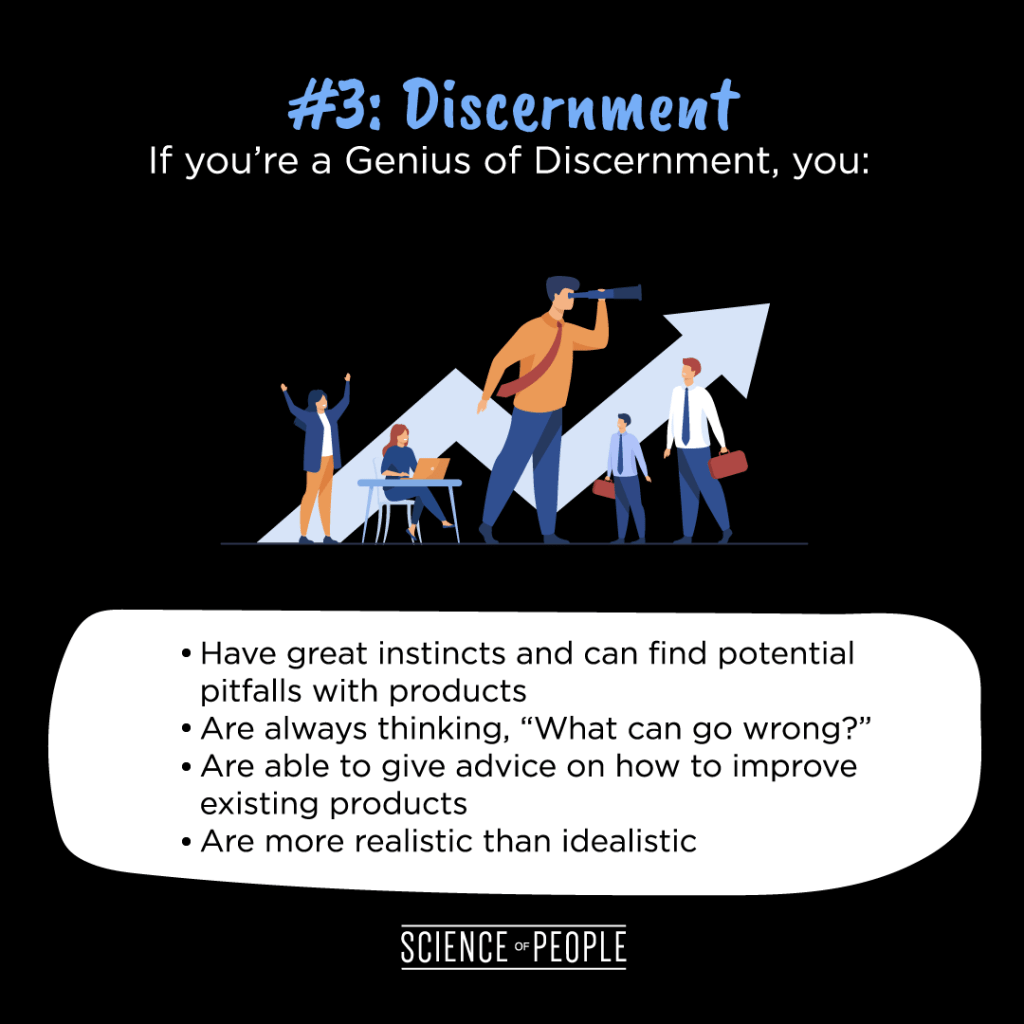
Discerners take what the Inventor comes up with and ask, “What are the problems that can arise?” These are what I call “dreambuilders” and “dreamkillers.” Optimistic dreambuilders think ideas and products can and will be great, while pessimistic or realist dreamkillers always bring up potential pitfalls.
If you’re a Genius of Discernment, you:
- have great instincts and can find potential pitfalls with products
- are always thinking, “What can go wrong?”
- are able to give advice on how to improve existing products
- are more realistic than idealistic
#4: Galvanizing
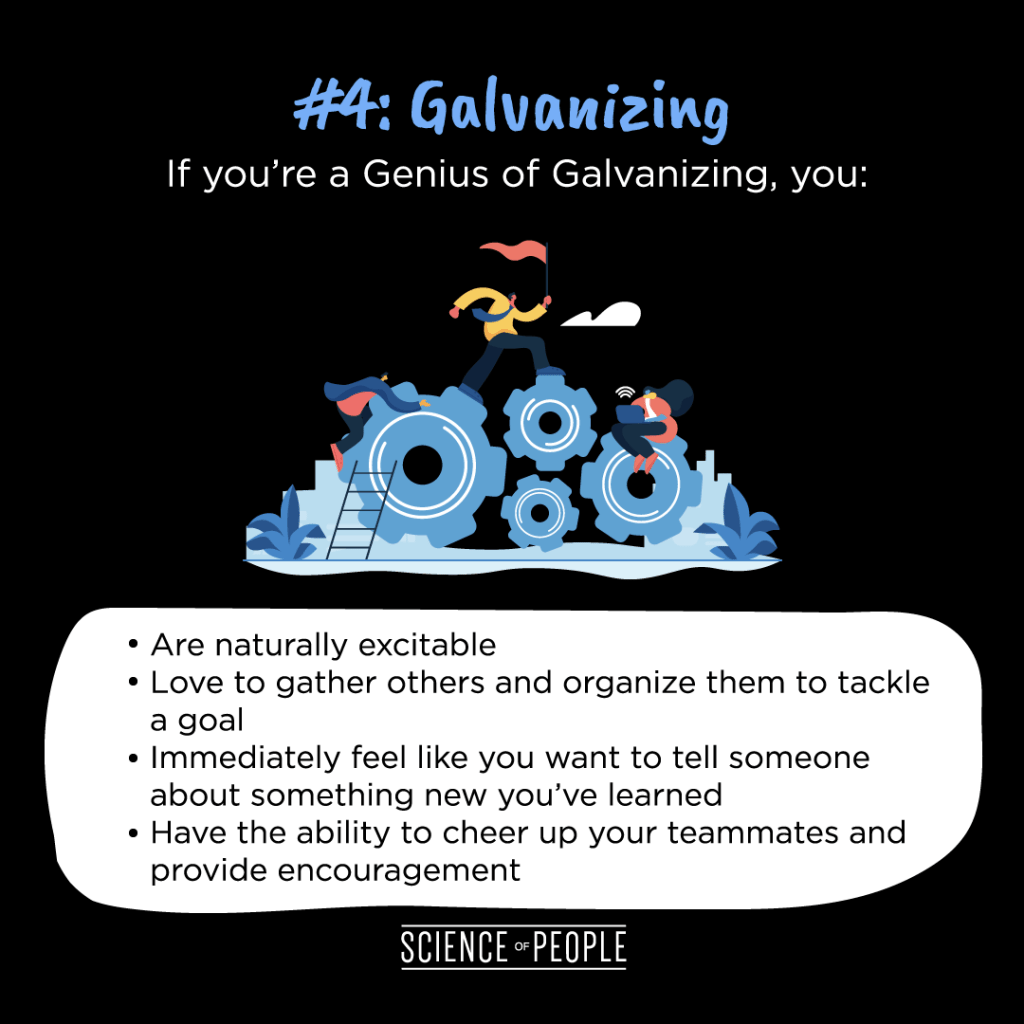
Galvanizers love to get people excited. They cheer people on and rally them together. And the best part is they love to do this for fun, while others would dread telling people about stuff they’re excited about!
If you’re a Genius of Galvanizing, you:
- are naturally excitable
- love to gather others and organize them to tackle a goal
- immediately feel like you want to tell someone about something new you’ve learned
- have the ability to cheer up your teammates and provide encouragement
#5: Enablement
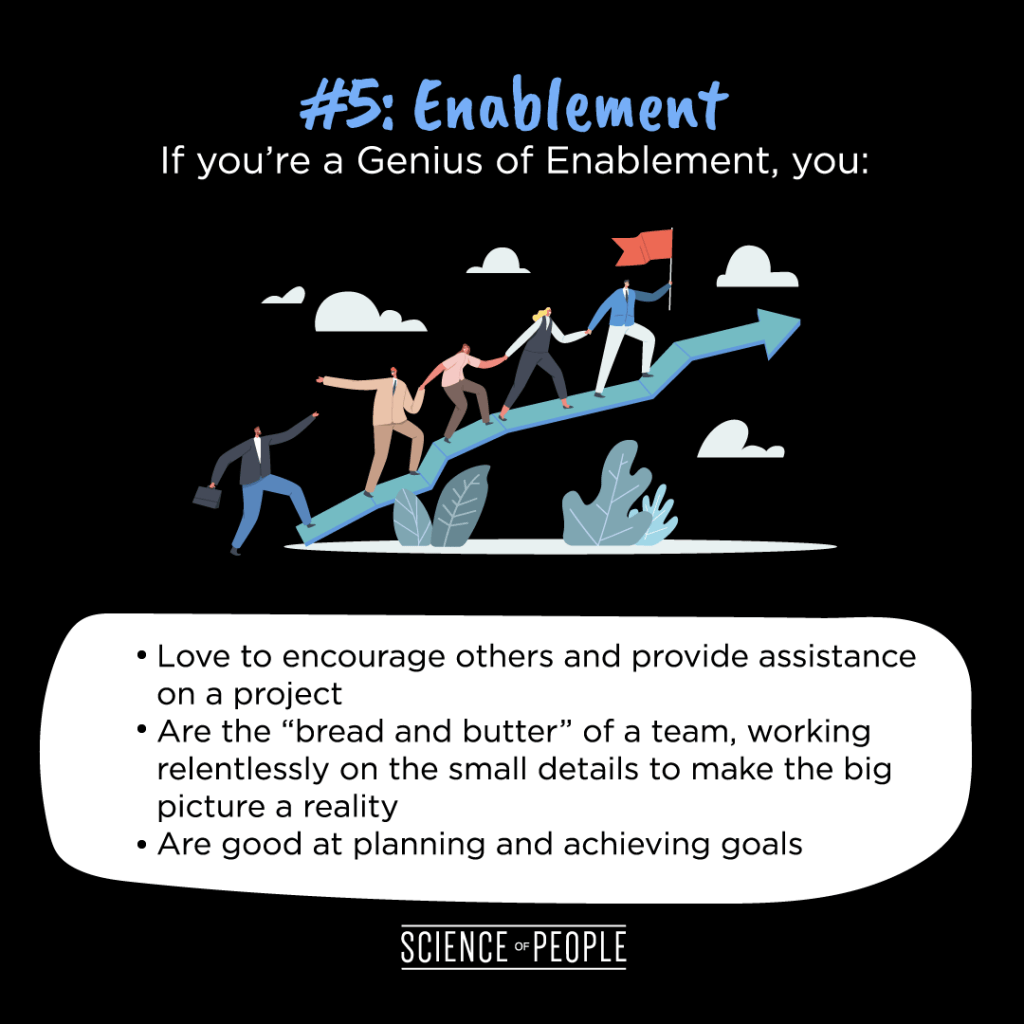
The Enablers are people on the team who make the product a success. They are geniuses who love responding to the needs of others and helping others bring those products to life. Enablers know exactly what needs to happen and what needs to be done.
If you’re a Genius of Enablement, you:
- love to encourage others and provide assistance on a project
- are the “bread and butter” of a team, working relentlessly on the small details to make the big picture a reality
- are good at planning and achieving goals
#6: Tenacity
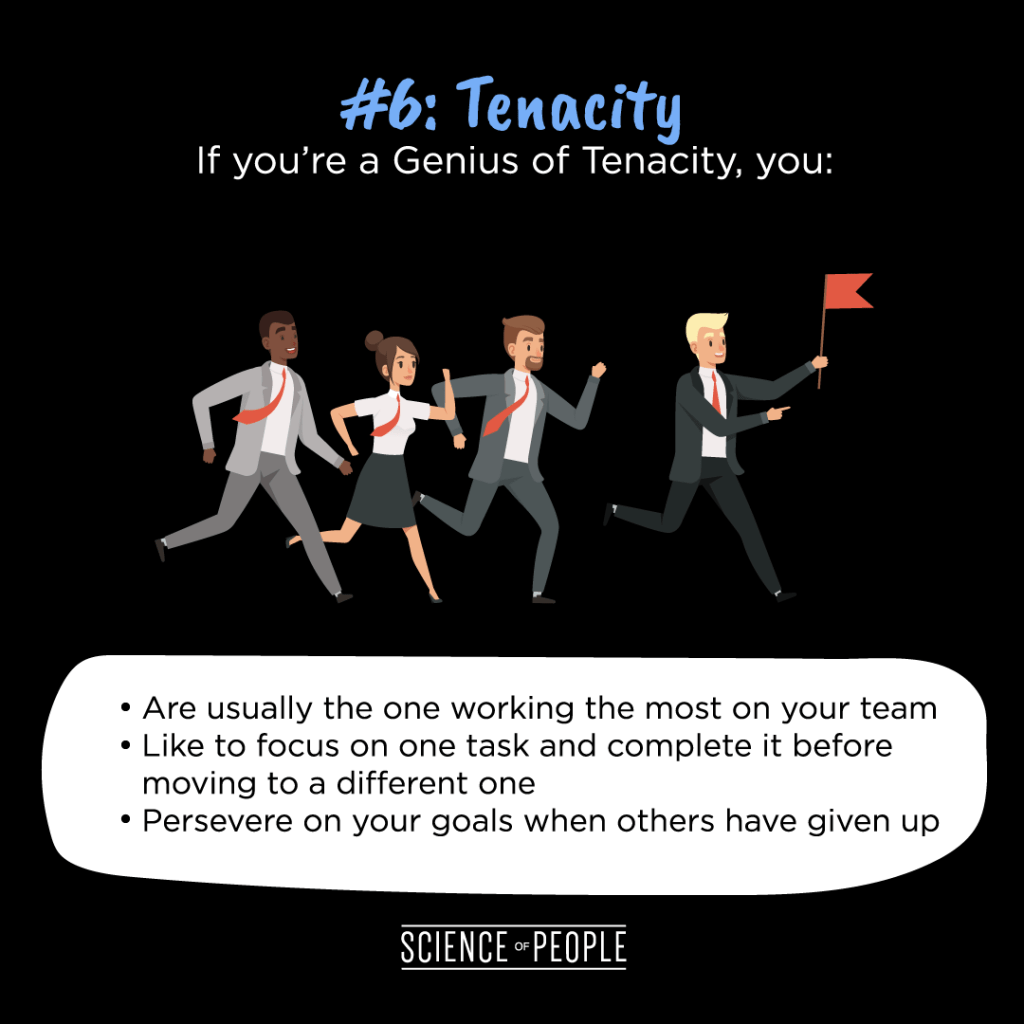
Tenacious people love to finish things. They don’t rest until it’s done. These people have great willpower and help others on the team get to the finish line.
If you’re a Genius of Tenacity, you:
- are usually the one working the most on your team
- like to focus on one task and complete it before moving on to a different one
- persevere on your goals when others have given up
The Science of Working Styles
One study published in The Journal of Abnormal and Social Psychology wanted to know if different work styles help people be more creative. Researchers took 2 groups of students and came up with an experiment:
- One group consisted of students who had similar personalities.
- The other group was a mixture of different personalities.
They were given problems to solve, like finding the best way to cross a road filled with dangerous landmines. Yikes!
And the amazing result? The groups with different personalities came up with way more creative methods to solve the landmine problem.
Helpful if you’re in a classroom trying to beat your competition… SUPER helpful if you’re in a competitive workplace.
But what personality traits are most effective in teams, you may be wondering?
Research shows that the most helpful traits to have from the Big 5 are extraversion, emotional stability, and openness. But no matter what personality traits people have, teams have also been found to have “collective personalities.”
In other words, people in a team tend to act in certain ways that align with a team’s “collective personality.” So if you want a strong, effective team personality, make sure your team members have those traits too.
Bonus: What’s Your Remote Work Style? (Assessment)
Working styles are not only restricted to the office either.
Everyone—even remote workers—has their own working style. In fact, we have a quiz on our Remote Guide to get you started. And while you’re at it, here are some more valuable work resources:
- How to Work from Home Successfully in 7 Steps
- How to Be a Good Manager: A Guide for Every Personality Type
- The Big 5 OCEAN Personality Quiz
*Exclusive Offer for Science of People readers: Want to take a professional assessment? Use promotional code VANESSA25 to receive 25% off The Working Genius Assessment.
Let me know in the comments your two main work styles!
